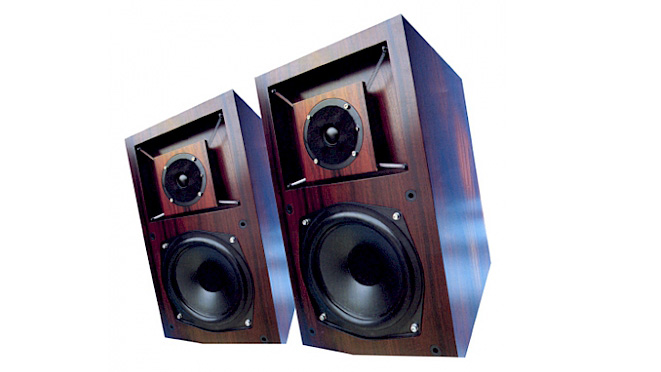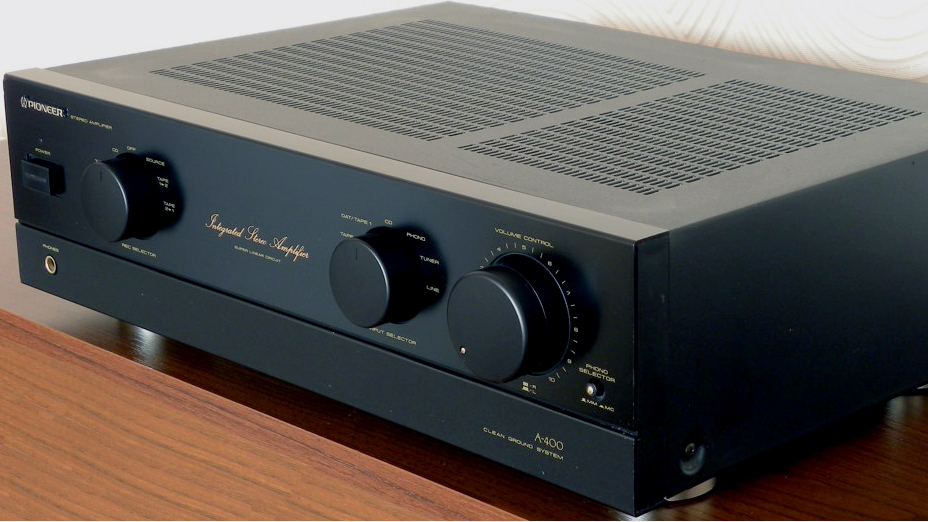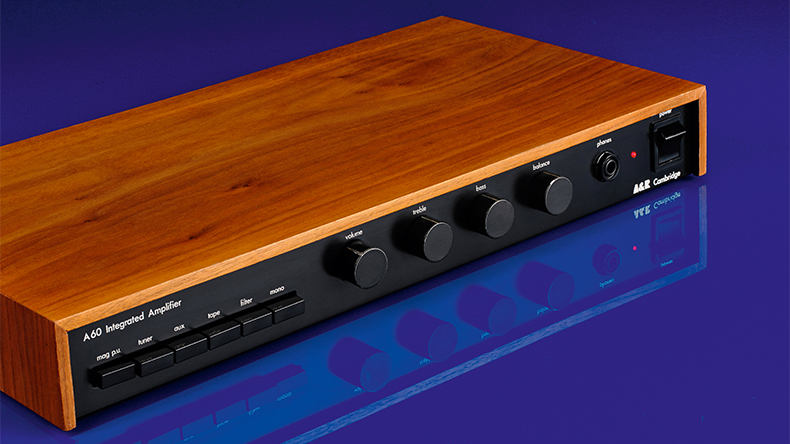If resurrecting classic hi-fi is in, we want these 8 products brought back to life
Because who wouldn’t want a new Nait 2?

Classic hi-fi is in. OK so it isn’t in in like bike shorts, Tik-Tok and The Last Of Us, but the hi-fi realm is undoubtedly experiencing a movement whereby many manufacturers are reimagining classic speakers and electronics for new releases. JBL, Wharfedale, Mission, NAD and Fyne Audio, to name just a handful of brands, have all launched modern-retro kit in recent months. As our global technical editor couldn’t help but notice, it was everywhere at last year’s High End Munich Show.
Some examples above have proven that combining today’s technologies with yesteryear’s aesthetic can be done exceptionally well. And it got us thinking about what old-timers we would like to see reinvented to take on the 21st century. Alas, we have come together to make a list!
We should, however, caveat it by saying these are very much wishlist products; some almost certainly will not materialise, not least as not every brand still exists today! And as much as we would also like to see modern-day Sony Walkman Pro WM-D6C and Nakamichi Dragon cassette decks – two picks that cropped up in the penning of our initial long list – we can't quite see the rebirth of tapes happening anytime soon.
Of course, if you have your own wishes for classic hi-fi you’d love to see revived, please do put them in the comments!
Pink Triangle Tarantella (1998)
London-based manufacturer Pink Triangle, which was founded by Neal Jackson and Arthur Khoubesserian in 1979 but was forced to shut up shop in 2003 after declining vinyl sales, made a big impression on the high-end turntable market in a relatively short time, combining striking aesthetics with high performance – and the Tarantella was a double-page advert for just that. The triangular chassis lit up pink, the power supply and speed-change were housed in a neat little ‘hornet’ box, and when we were presented with the company’s entry-level turntable we quickly lapped up its open, transparent sound and refreshingly clear dynamics. Some have gone on to note speed instability issues, but nevertheless it went on to gain legendary status.
We could actually be in luck for a Tarantella revival, or perhaps a similar design, as Pink Triangle is now back after a 20-year hiatus! And if its ‘first’ turntable – the £8000, highly customisable Blue Danube, said to possess “the lowest wow, flutter and rumble ever measured” – is anything to go by, the British firm looks to be starting off where it finished. We look forward to hearing more at the Bristol Hi-Fi Show 2023.

Heybrook HB1 (1983)
While it now has plenty of company, the Heybrook HB1 was the first product to win three What Hi-Fi? Awards in a row (in 1983, 1984 and 1985). The entry-level bookshelf speakers were designed by Heybrook co-founder Peter Comeau, who many of you will know as the speaker designer behind the Mission 780 and 782, Volare V63 and Elegante E8, and Wharfedale's iconic Diamond range, to name just a handful. Heybrook was named after Devon’s Heybrook Bay in the UK, where the company operated, and arrived in the late 1970s at a time when other British hi-fi brands such as A&R Cambridge and Rega were also starting out.
The latest hi-fi, home cinema and tech news, reviews, buying advice and deals, direct to your inbox.
Its first speaker was arguably what turned out to be the company’s most iconic, the HB2, but Comeau and his friend and co-founder Stuart Mee wanted to create a truly budget speaker around the £100 mark. Comeau has said before that at one time the popular HB1 had about a 15 per cent share of the loudspeaker market under £200. A true classic that is very much alive and kicking in the second-hand and restoration market, and one we imagine could be resurrected to give the very few class leaders in the entry-level market today a run for their money.
Acoustic Research AR18 (1978)
Back in the 1970s, Acoustic Research was one of the biggest hi-fi brands around. You wouldn't know it by looking at its website today – it's worlds away from the brand it used to be and is, like Pioneer, Onkyo, Klipsch and Jamo, now owned by Voxx – but the Massachusetts-based company made a huge impact in the hi-fi market with its popular turntables and AR line of acoustic-suspension loudspeakers, of which the very fanciable AR18 was one.
Following up the legendary AR7, the AR18 became one of Acoustic Research's most famous products. They were considered a very simple design when they arrived in the late 70s – two-way, sealed-box, in-house-manufactured standmounters housing a 20cm paper cone mid/bass, a rather unrefined 32mm tweeter and a minimalist crossover design. But this formula led to one of the most fun-sounding small speakers in the history of the budget market, not least one of the finest.
Liveliness doesn't often take a front seat in budget speaker tuning today so, given a sweeter, less rolled-off treble, a reimagined AR18 could do very well indeed.
- The What Hi-Fi? Hall of Fame: the best hi-fi of the 1970s
Roksan Darius (1986)
The year after Roksan (and its debut product, the Xerxes turntable) came into this world courtesy of co-founders Touraj Moghaddam (now of Vertere) and Tufan Hashemi, so did its first pair of speakers. Named after Persian ruler 'Darius the Great' (Moghaddam was very interested in the Persian Achaemenid Empire from 550 BC), the Darius (pictured top) were distinct-looking, high-end standmounters with a suspended tweeter (it was supposedly the first tweeter to be mechanically isolated from a bass unit using springs), a remarkable exoskeleton stand, and a high-performing direct, dynamic sound output.
The Darius S1 that arrived in 2014 actually had little resemblance to the 80s original – from both engineering and aesthetic perspectives – though it was also a two-way design and it too performed impressively for its price and time. Of course, Roksan has gone on to be more celebrated for its electronics handiwork than its speakers (which no longer feature in its catalogue), but we wouldn't say no to a true Darius homage with a highly dynamic and precisely imaged sound.
- Touraj Moghaddam interview: the man behind Roksan and Vertere talks turntables and cables

Pioneer A400 (1990)
Pioneer absolutely hit it out of the park with the A400 budget stereo amplifier in the early 90s, much like Onkyo did a couple of decades later with its budget A-9010 integrated, so you can imagine how much we anticipate the UK return of these home audio heavyweights at the Bristol H-Fi Show. Indeed it has been a while, and the entry-level market could do with a new competitor to bring the heat to the largely untouched class leaders of Marantz and Rega.
Back then, the A400's combination of class-leading detail, agility and dynamics did send the competition, from Arcam to Cyrus to Denon, back to the drawing board, forcing wholesale changes in the field.
As we said in our What Hi-Fi? Hall of Fame: the best hi-fi of the 1990s, where the A400 proudly sits, we heard systems where the amplifier was flanked by high-end sources and speakers, yet still came up smelling of roses – a rare feat for any budget electronics.
A&R Cambridge A60 (1976)
Amplification & Recording Cambridge (now known as Arcam, of course) created a blinder of a first product. The A60 amplifier laid the foundations on which the British firm built its success and, priced at £190, was considered by many (including us!) throughout the 80s as the ideal upgrade from the popular entry-level models at the time – your NAD 3020s, Mission Cyrus Ones, and Kenwoods.
The power output of 40W per channel wasn't special and might well struggle a little driving today's speakers, but we'd take the punchy, rhythmic and dynamically expressive A60, revisited – so long as it too had wooden casing, of course.
Some years ago we listened to the A60 against Arcam's current A19 model at the time and, while the latter was indeed the better-sounding amplifier all-round, the veteran did show it a thing or two about how to truly entertain.

Musical Fidelity A1 (1984)
Musical Fidelity's first integrated amp (which followed The Preamp and designer-named Dr Thomas Power Amp two years prior) is a bona fide classic that went on to sell some 200,000 units. This Tim de Paravicini design used Class A amplification and output a smooth, tonally warm, slightly coloured sound that many considered valve-like in character – a likeness that was also accentuated by the A1 tending to run fairly hot (Class A, pretty high power consumptions and small chassis will do that, after all, even if it did 'only' deliver 20 watts per channel.)
In the following years, revisions were made to the mid-ranging A1 and a couple of limited-edition models were launched, while a modern A1 sequel (also with Class A amp modules) arrived in 2008 with digital connectivity. It was good, but we'd be intrigued to see how Musical Fidelity would approach an A1 tribute design today.
Naim Nait 2 (1988)
This iconic gem of a shoebox-sized amplifier requires little introduction to Naim loyals, and consequently perhaps the Nait 2 is better left in the past. But a 50-70 watt per channel, and maybe even analogue-only, version for today's market to take on Rega's Brio would nonetheless be intriguing to see materialise – perhaps even as a limited-edition 50th-anniversary product this year. After all, there is still a solid second-hand market for Nait 1s, 2s and 3s from the 80s/90s, and there aren't many models of that ilk today to choose from.
As we said in our audio and AV products wishlist for 2023, considering the pricier models in the Nait range were advanced in mid-2019, with both the (now What Hi-Fi? Award-winning) Nait XS 3 and Supernait 3, you could say that more affordable Nait components are due.
MORE:
14 of the most legendary hi-fi products of all time
7 examples of high-end audio engineering to savour
10 of the craziest-looking high-end hi-fi products on the planet

Becky is a hi-fi, AV and technology journalist, formerly the Managing Editor at What Hi-Fi? and Editor of Australian Hi-Fi and Audio Esoterica magazines. With over twelve years of journalism experience in the hi-fi industry, she has reviewed all manner of audio gear, from budget amplifiers to high-end speakers, and particularly specialises in headphones and head-fi devices.
In her spare time, Becky can often be found running, watching Liverpool FC and horror movies, and hunting for gluten-free cake.
